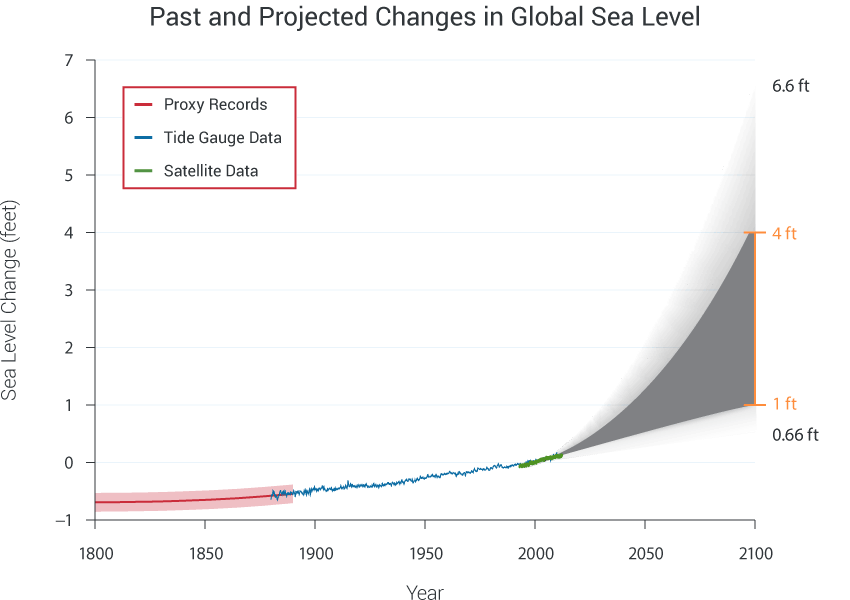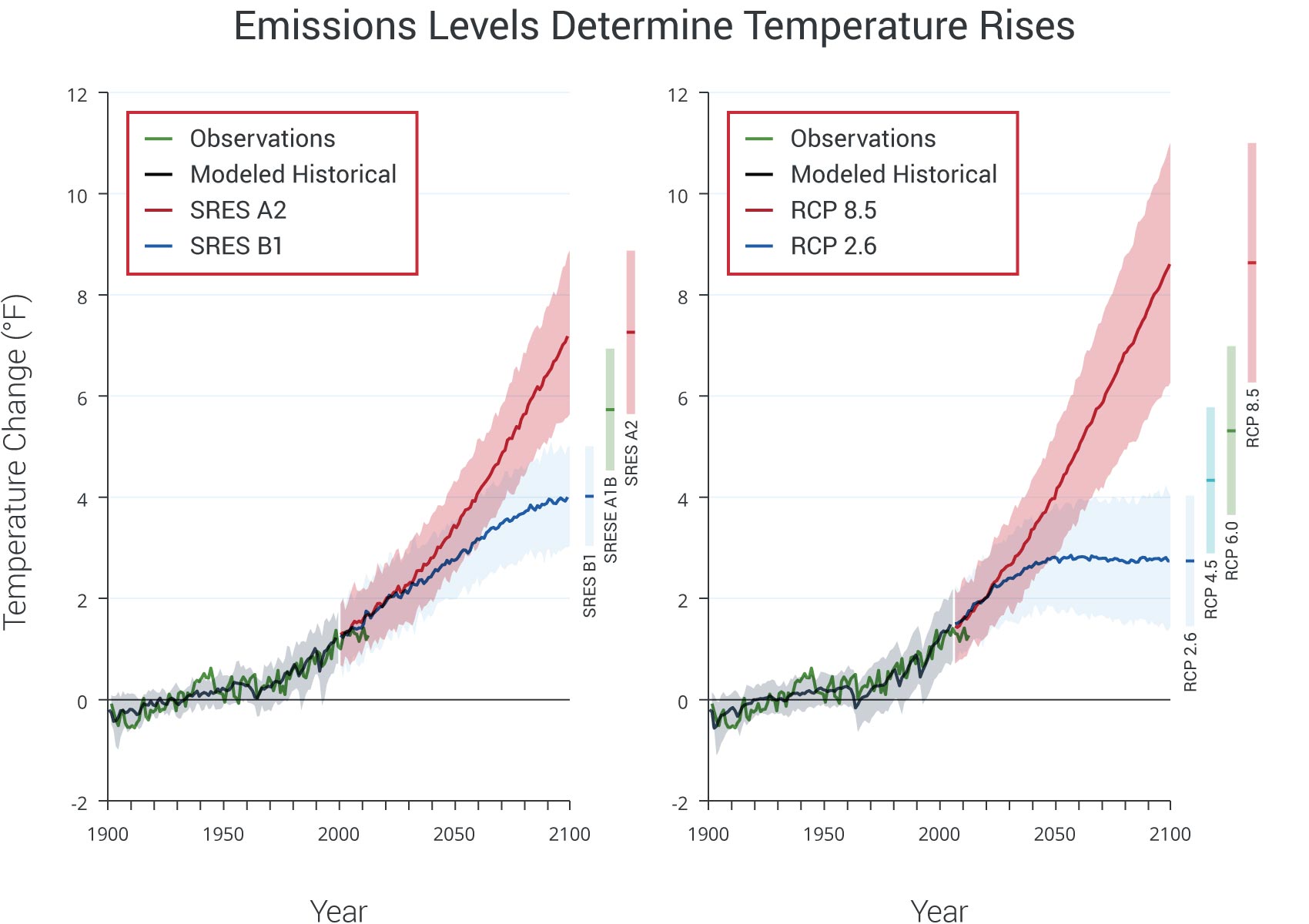Introduction
Heat-trapping gases already in the atmosphere have committed us to a hotter future with more climate-related impacts over the next few decades. The magnitude of climate change beyond the next few decades depends primarily on the amount of heat-trapping gases that human activities emit globally, now and in the future.
Projected Temperature Change
Projected Temperature Change
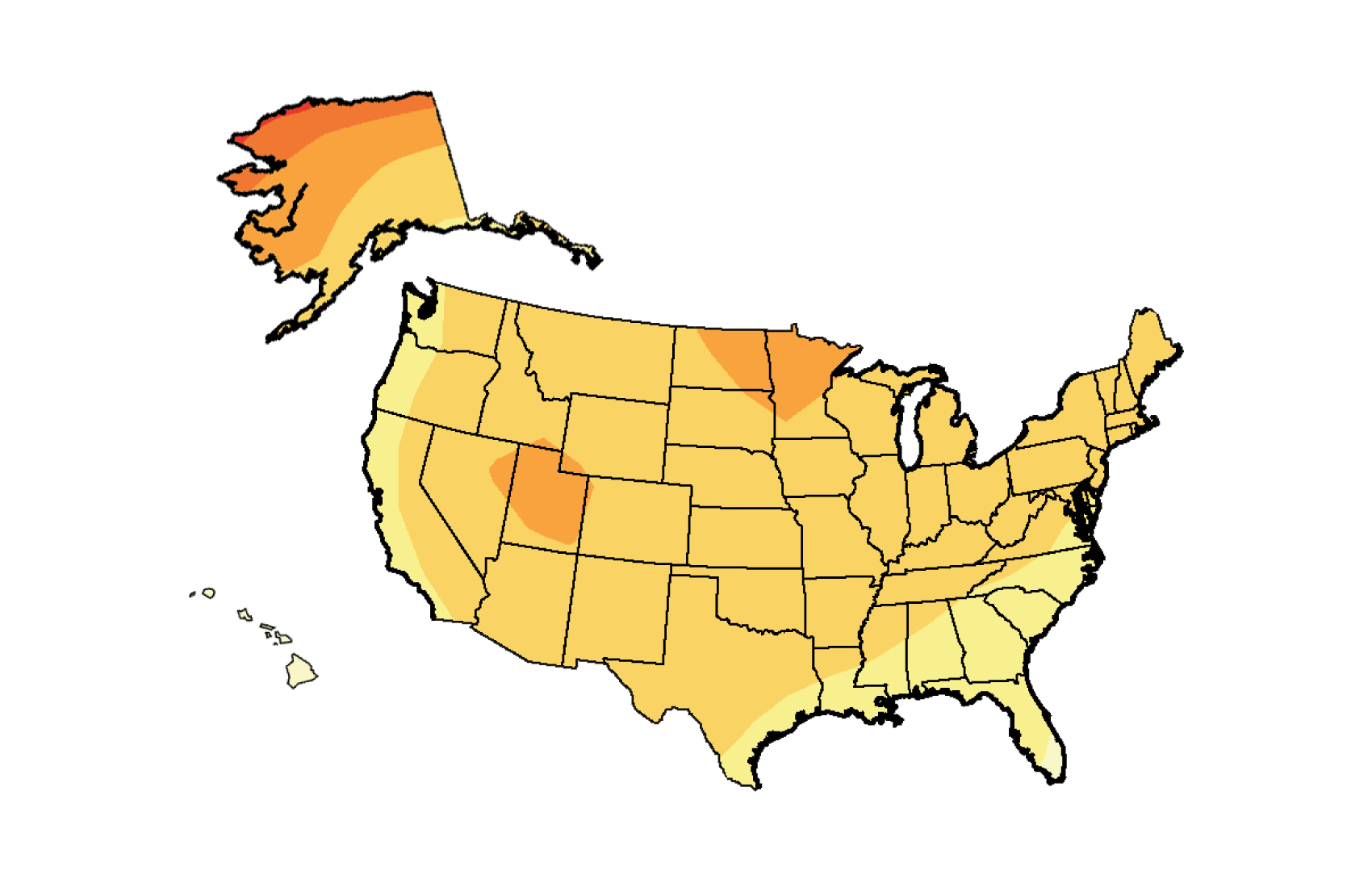

Maps show projected change in average surface air temperature in the later part of this century (2071-2099) relative to the later part of the last century (1970-1999) under a scenario that assumes substantial reductions in heat trapping gases (B1) and a higher emissions scenario that assumes continued increases in global emissions (A2). These scenarios are used throughout this report for assessing impacts under lower and higher emissions. (Figure source: NOAA NCDC / CICS-NC).
Projected Changes in Soil Moisture
Projected Changes in Soil Moisture


Increased temperatures and changing precipitation patterns will alter soil moisture, which is important for agriculture and ecosystems and has many societal implications. These maps show average change in soil moisture compared to 1971-2000, as projected for late this century (2071-2100) under two emissions scenarios, a lower scenario (B1) and a higher scenario (A2).9,10,11,12,13,14,15 Eastern U.S. is not displayed because model simulations were only run for the area shown. (Figure source: NOAA NCDC / CICS-NC).
Projected Precipitation Change by Season
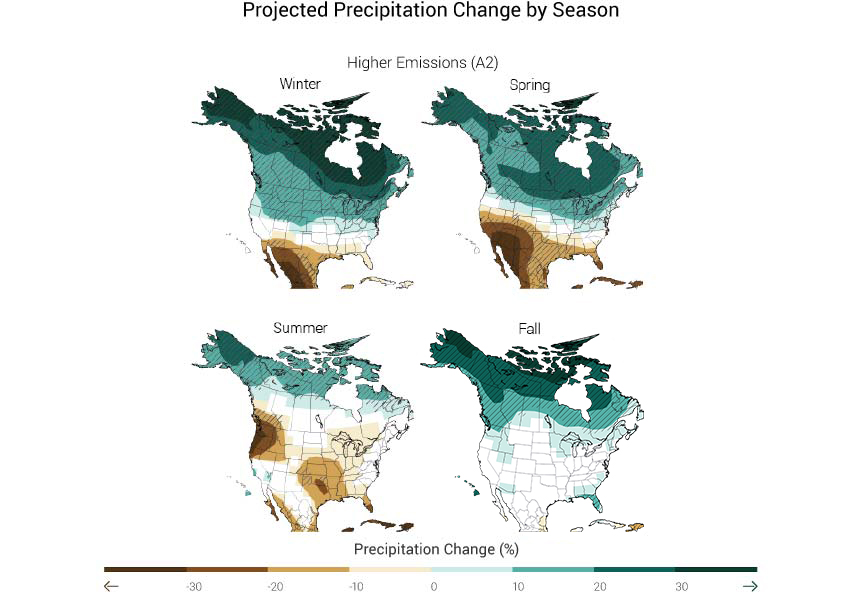
Climate change affects more than just temperature. The location, timing, and amounts of precipitation will also change as temperatures rise. Maps show projected percent change in precipitation in each season for 2071-2099 (compared to the period 1970-1999) under an emissions scenario that assumes continued increases in emissions (A2). Teal indicates precipitation increases, and brown, decreases. Hatched areas indicate that the projected changes are significant and consistent among models. White areas indicate that the changes are not projected to be larger than could be expected from natural variability. In general, the northern part of the U.S. is projected to see more winter and spring precipitation, while the southwestern U.S. is projected to experience less precipitation in the spring. Wet regions are generally projected to become wetter while dry regions become drier. Summer drying is projected for parts of the U.S., including the Northwest and southern Great Plains. (Figure source: NOAA NCDC / CICS-NC).
Change in Maximum Number of Consecutive Dry Days
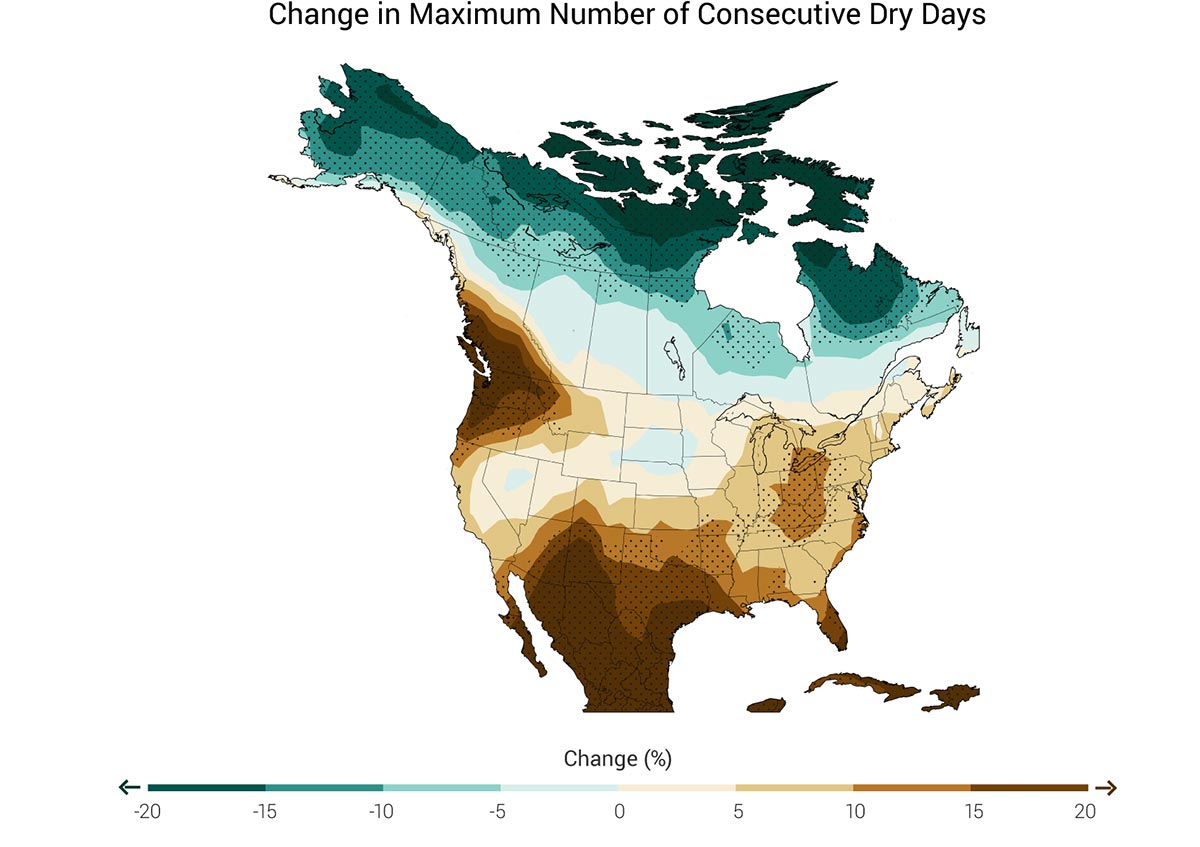
Map shows change in the number of consecutive dry days (days receiving less than 0.04 inches of precipitation) at the end of this century (2070-2099) relative to the end of last century (1971-2000) under the highest scenario considered in this report, RCP 8.5. Stippling indicates areas where changes are consistent among at least 80% of the 25 models used in this analysis. (Figure source: NOAA NCDC / CICS-NC).













